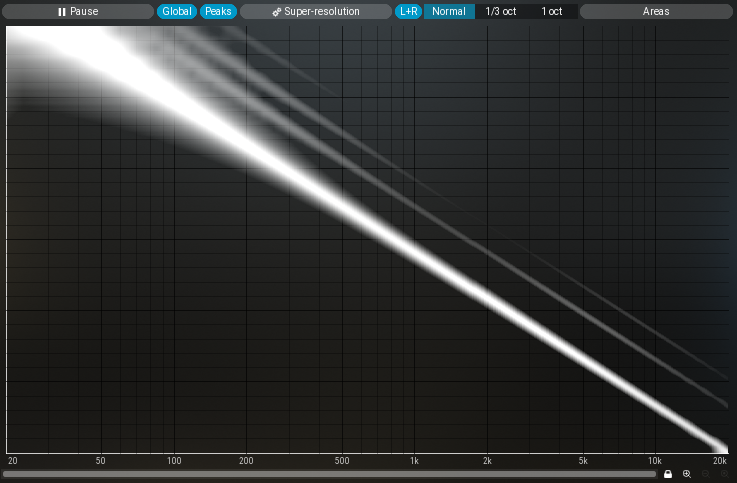In search of Passive EQ #3
Nov 18, 2024, 4:40:00 PM
So Rare and Rare SE are made by Analog Obsession. It has two versions - the first one is a just L/R stereo processing, and then the SE version, which can work in L/R as well as in MS. It would be easier to have just one version with a switch to toggle in between the two versions. I mean it's not a big deal to update two separate .vst files, but I mean it's just a simple convenience to have just one plugin, one code base... both for the user and for the developer. Or am I missing something?
For the sake of simplicity, I'll be testing the SE version, and let me get something out of the way first. Massive props for having M/S mode. The way I see it, it's just something every plugin developer should implement, just like a dry/wet knob. Devs, please, sort out your phase issues in the code, thanks. I am sick of dealing with that myself on my own AUX channels. Moving on, the MID/SIDE modes are infinitely useful during mixing when you need to touch up something too wide. For example a synth bass, that has some widening on it through combination of effects, or a already processed and baked in beat loop, that you really want to use, but it's breaking up in mono, or has weak stereo image. A big win for Rare over some of the rest of my software gear.
Judging by the sound alone, I am already a fan. I don't have the exact scientific explanation backed by concrete numbers to tell you exactly what's going on behind the UI. I just know, that I crank potentiometers, and out comes something that triggers happy chemicals in my brain. The biggest difference in sound character can be achieved by changing values on the bandwidth knob, but more on that later.
I am now running it on a master bus of my mix I did earlier, and I feel like this is exactly where this EQ belongs the most. The final sheen and oomph it creates makes for a pleasant smile curve. Any time I've tried it on a whole mix, the first thing I did was polishing up the high end. The bass is quite easy to dial in too. I just chose which frequency I want to enhance, then I turn it up by few dB, and dial in the atten knob to get rid of the unwanted hum the boost eventually creates. And yes, I am talking about the Pultec trick. Absolutely beautiful, it's here, it works, and I wasn't expecting anything else.

Let's take a look at how does Rare perform in terms of aliasing and oversampling. (4x oversampling if switched on)
I left the plugin in its default state and ran a 0 dBFS sine sweep going from 20 Hz to 22 kHz through it. We can see, that there is already some additional content being present right above the root sweep, but there is no foldback distortion present, even beyond 20 kHz. No oversampling.

The bass knob is set to 60 Hz and highs are set to 16 kHz, bandwidth remains default on Broad with both boosts cranked up to maximum without any Atten. The same sine sweep, no oversampling. This time there is even more harmonics than before as a result of pushing the limits, but Rare still remains pretty much clean.

In this last sweep test, everything is set the same, with the only difference being oversampling being engaged. It seems like it cleaned up the tone of all additional harmonics. As evident by the previous test, the plugin was already very much clean as is, now even cleaner.

In other words Rare can handle all sort of audio content, even masters, and you don't have to worry about foldback distortion being generated by sounds bouncing off of Nyquist.
Going back to the sound character, I would like to touch upon the importance of the bandwidth potentiometer. The knob makes all the difference when we talk about how this EQ sounds. Rare defaults to having Bandwidth all the way to broad, and I believe that is where you want to start. When sculpting the sound, you might come across a situation, when you would like to have something sharper. Turning Bandwidth just one or two points towards the Sharp stage, meaning to the left, will result in much more noticeable changes in the sound when tuning the boost/atten knobs.

This will come in handy when just a small change is desired. Of course, I understand, that this is just another label for "Q" parameter, that adjusts the response curves, but in my opinion, the magic comes from the fact, that we don't see how exactly it is changed. I have to rely on my ears and trust them. I personally like the broad most setting, however just a tiny bit to the left can make a huge difference especially on highs, that become sharper and suddenly give out more of their presence, without changing the gain. Although it's a good idea to re-evaluate your settings once you change the bandwidth, because again, the change in sound character can be quite huge.
I could just get Plugin Doctor and check how bandwidth changes the response curves, but naively, I want to keep the inner workings a secret for the sake of "keeping the magic". I genuinely think, that this approach brings a lot of value when we use our ears more than our eyes. The over-reliance on spectrum meters influences the resulting sound more often than not, and often not in a good way in my opinion.
Rare was tested at a 48 kHz sample rate in 32 bit.
